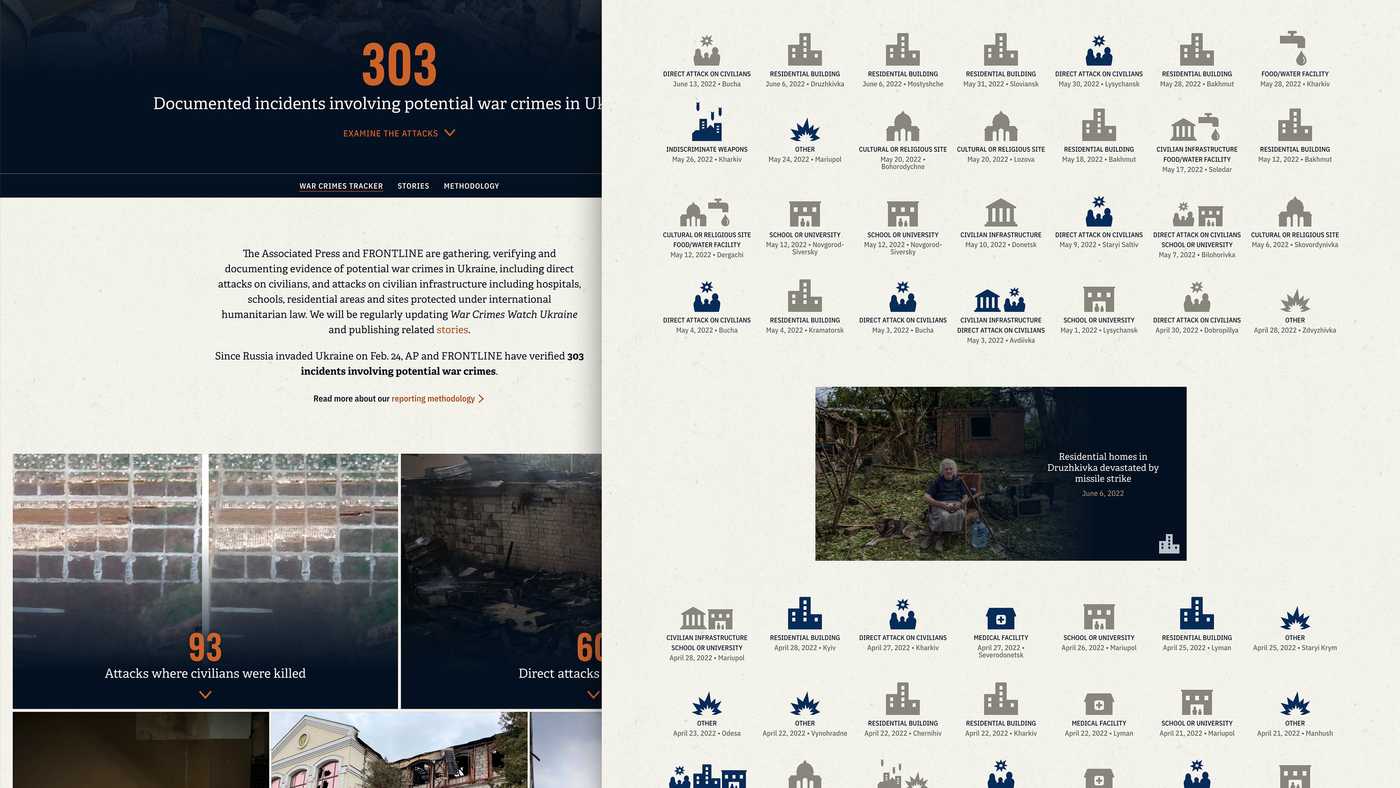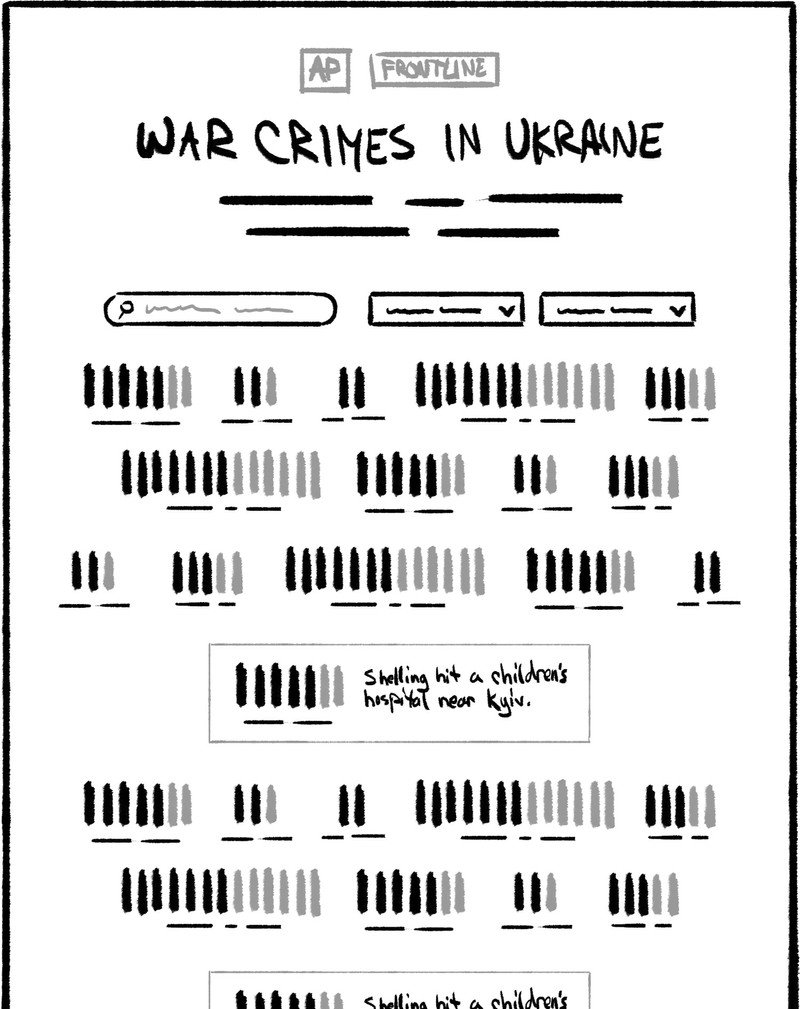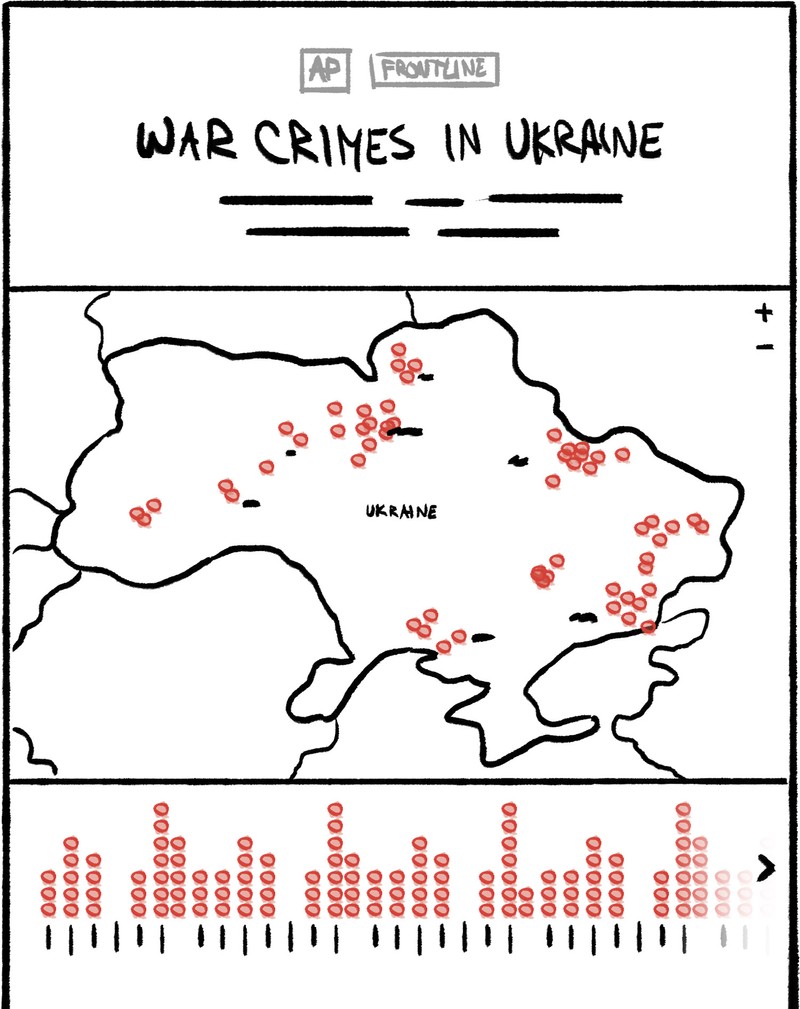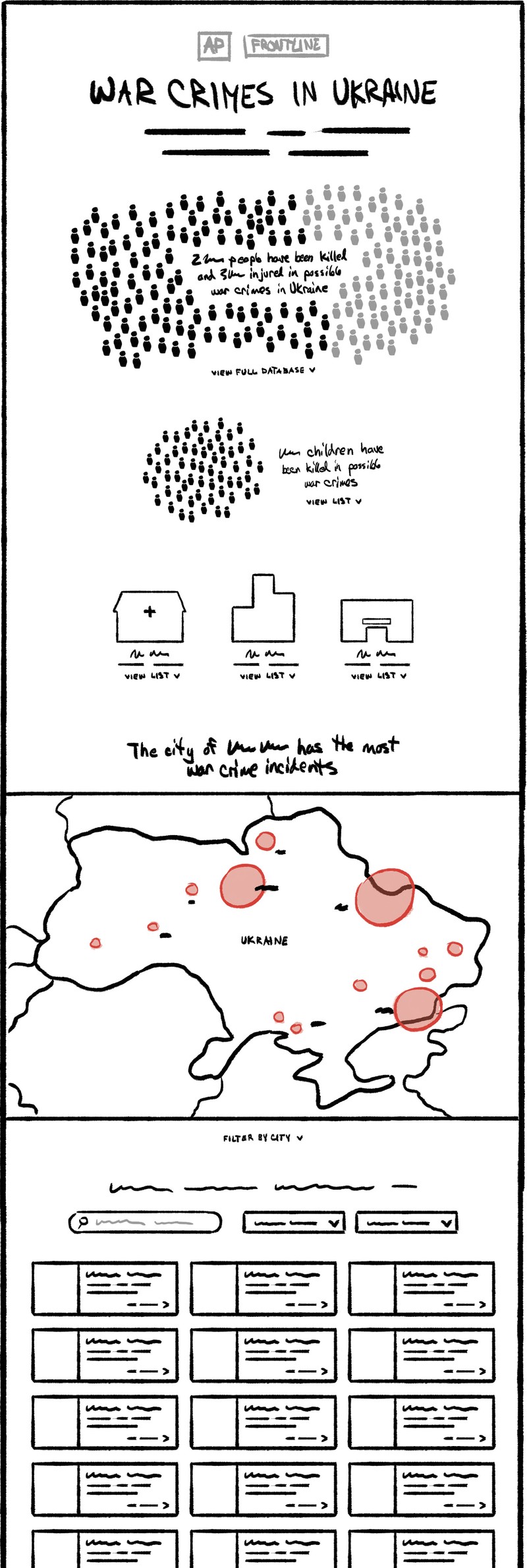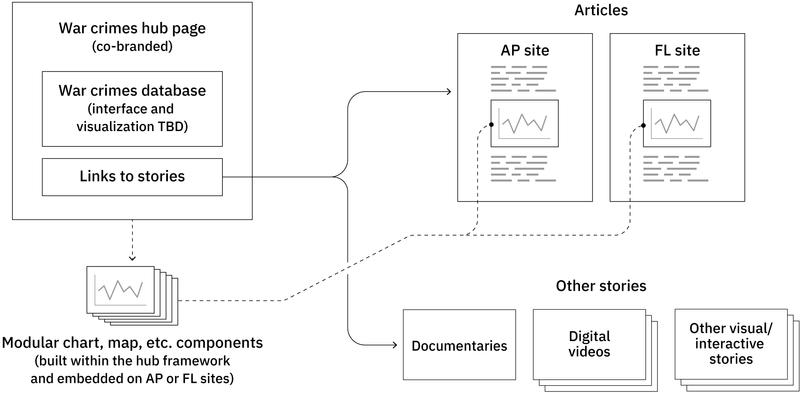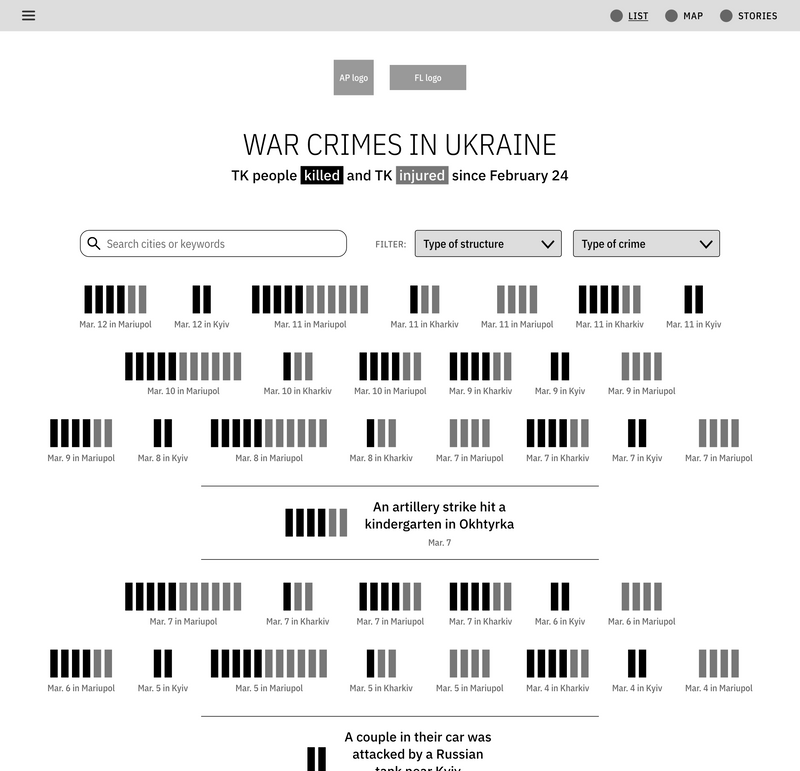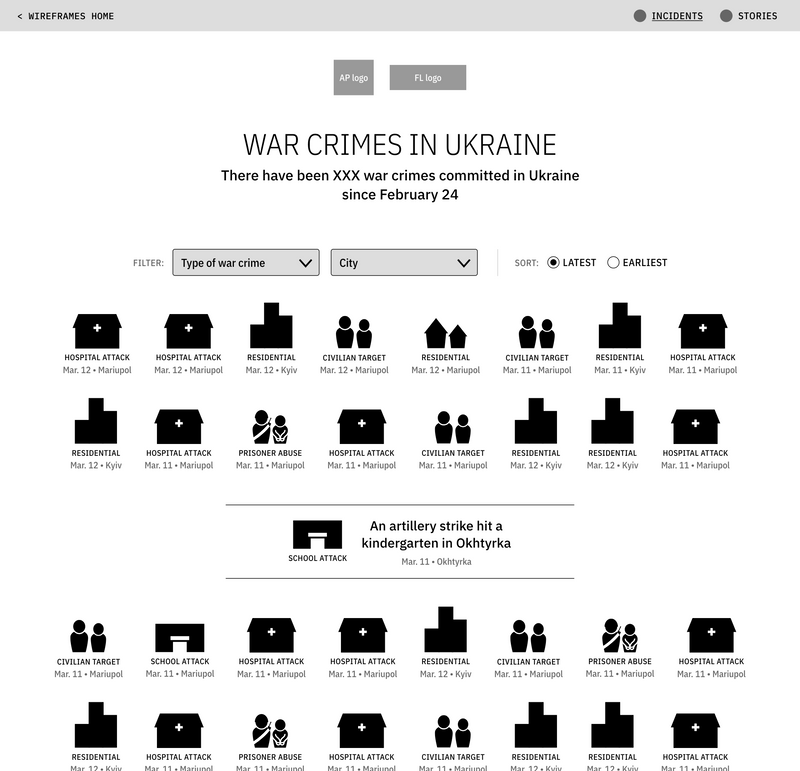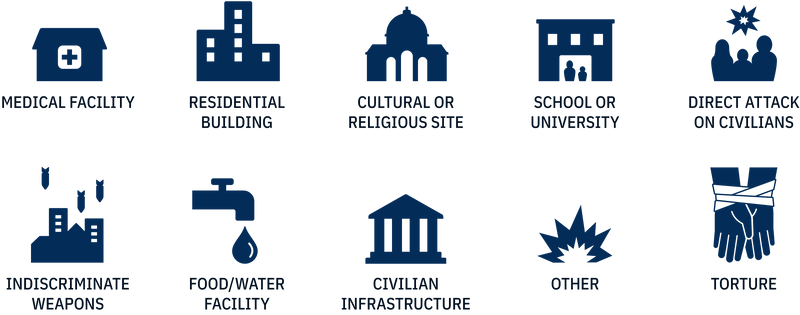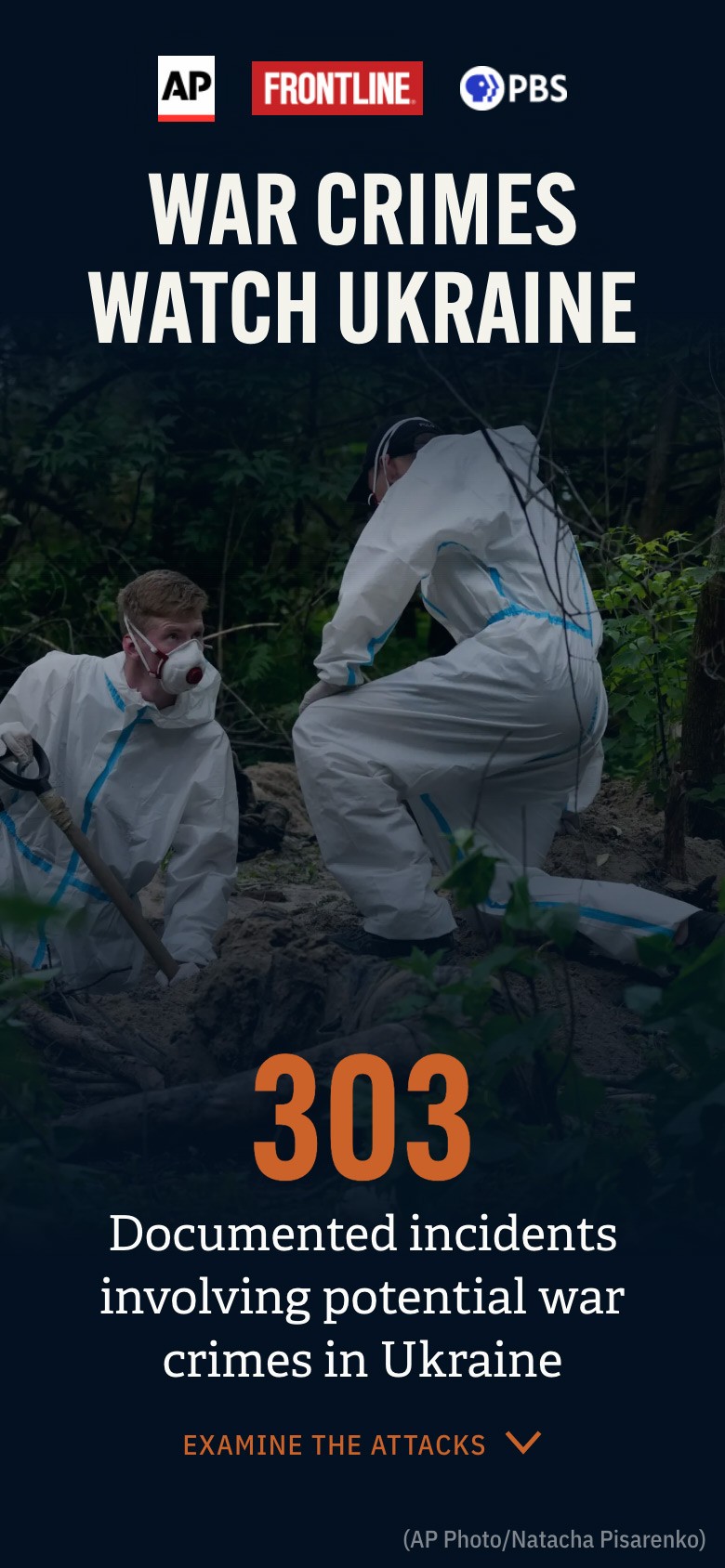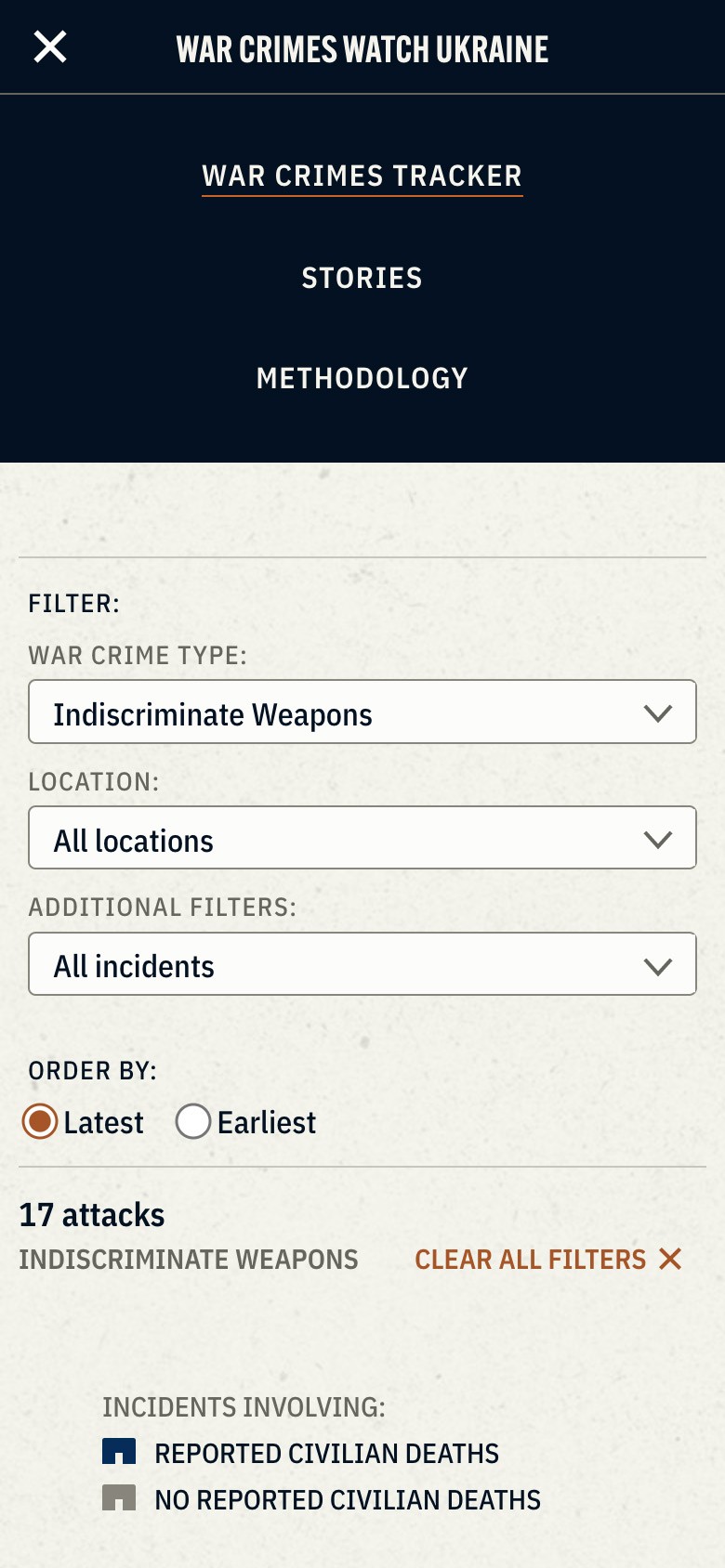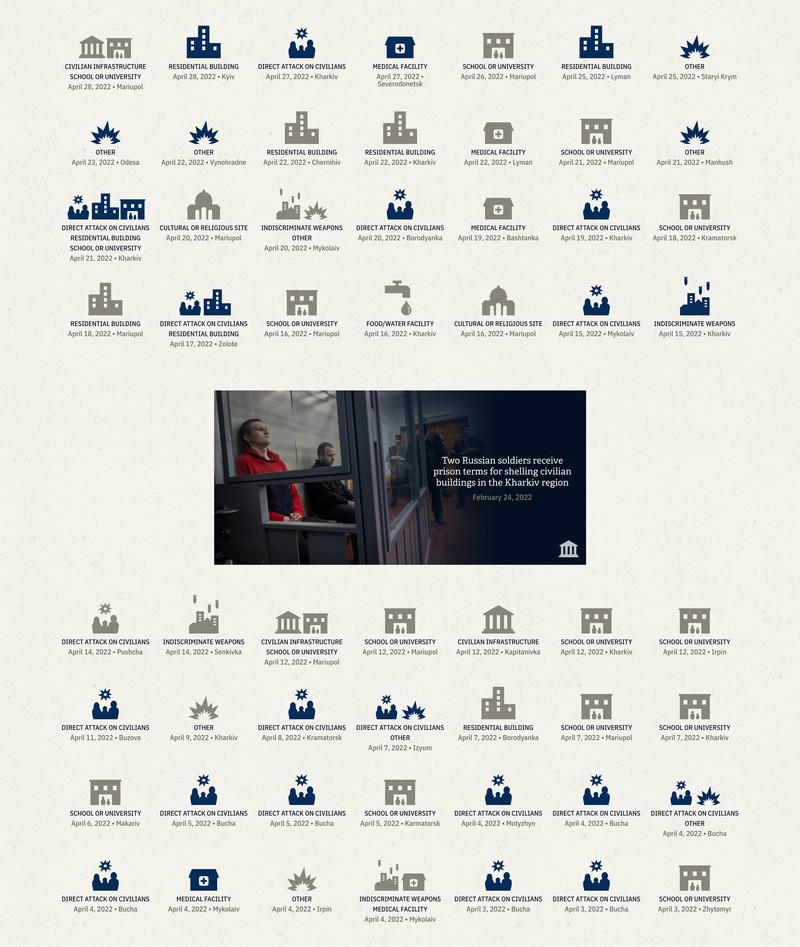Project:
War Crimes Watch Ukraine
In the weeks following the Russian invasion of Ukraine, FRONTLINE partnered with the Associated press to document potential war crimes happening in the country. This set the wheels in motion at FRONTLINE on our special projects team—I began sketching out design directions that would later become a public database documenting hundreds of potential war crimes in Ukraine.
I mapped out how this web application and database would integrate into the websites of the two partners.
My initial design challenge was to figure out how to represent each attack visually. I created rough wireframes, first looking at the attacks by showing dead and injured for each one. We quickly realized that it would be too difficult to verify the number of dead and injured in such a volatile situation, so this solution didn’t work. I adjusted this direction and moved towards showing the attacks in a different way.
The reporting team was developing categories for each type of war crime to tag the attacks with, so I designed a system of icons to go along with this. Our plan was to use these icons as the primary visual representation of each attack.
Images of atrocities are hard to look at but are a necessary part of an experience trying to document what’s happening on the ground in Ukraine. We use photos and videos throughout the experience to emphasize the human impact and to document each attack.
We display a counter at the top that updates daily as the reporting team works to verify each attack. And the attacks can be filtered by the type of war crime and the location in Ukraine.
The icons, taken together in order, present a picture of the devastation happening on the ground in Ukraine as well as an accurate document of the atrocities of the war.
